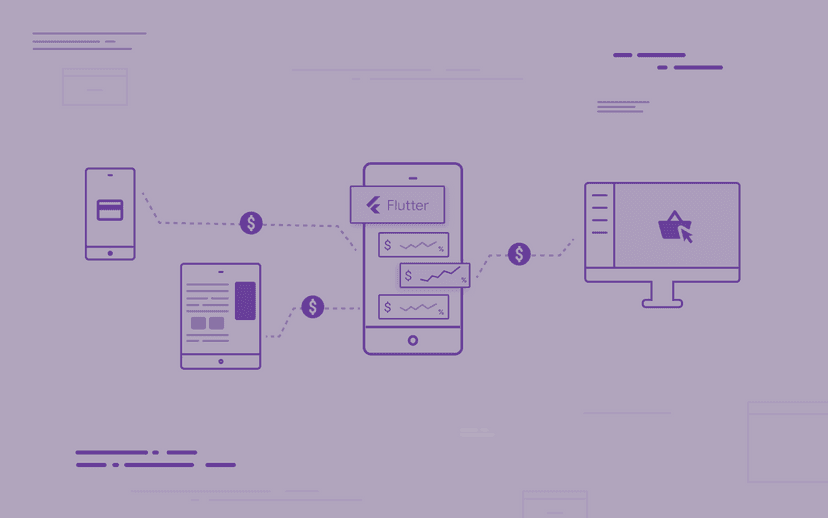
Custom Software Development Price Models - What Factors Affect the Cost?
Today, the market is filled with innovative solutions in virtually every field. To ensure you are a step ahead of the competition, you may conclude that the best way to do so is to let your product enter a new platform by developing your application. However, the quality has its worth. There are many factors affecting software development's final cost that plenty of service providers learn on their way. We want to facilitate this process for you to make sure the overall price for our services is transparent, and the pricing system is easy-to-learn and concise.
This article discovers various factors that affect the final cost of software development. We want to equip you with this knowledge to ensure your business decisions regarding the cost estimation will be well-informed, and you - as our client - remain satisfied with the service provision. Delve deep into details and learn how to estimate your custom software development price!
Various Factors of Software Pricing Cost Estimate
The variety of factors that will affect the cost of software development makes it difficult to prepare a rough estimate. Let us now delve into several of them so that preparation for the software development process becomes more concise.
Here, we can start by dividing these causes into two separate categories:
-
Development-Related Factors,
-
and Application-Related Factors.
The first category covers everything related to the cost of the general project development. These include workforce-related factors, such as the developers' level of seniority or code development approach.
The other category that also influences the cost of software development consists of factors more related to the particular needs of your application. They are mostly determined by market factors and your individual needs.
Development-Related Factors That Can Influence Software Cost
Software Project Size
The first factor that influences the cost of custom software development services is the project's size. For example, creating a full-fledged shopping platform with the integration of social media widgets will engage more people than the creation of a simple web page.
Human Power
That factor may include the level of seniority of the people involved in the project, their number, and assigned roles. Depending on the project's scope, there may appear a need for involving a more robust team.
Outsourcing Vendor Location
Another aspect worth consideration is the location of your development team - especially when part of your workforce comes from outsourcing services. It appears that Poland has become a trustworthy hub of talented developers outsourcing, whose employment may be worth consideration. Learn about the benefits of working with them from our blog article.
Web or Mobile App Development Pricing - Key Factors That Influence Final Cost
App Functionalities
Perhaps your application must include a vast number of tiers or modules. Or is there a need for solutions to work fully on-cloud? What about applications built specifically to work on-premises? Such information will vastly influence the total cost of the software. That is also why it needs to be addressed during negotiations with software development companies.
Software Integration
A rising number of dedicated digital solutions demands integration with other software. The level of its integration may vary between:
-
One-way integration,
-
Two-way integration,
-
Shared databases,
-
Custom integration solution,
-
Ready-built ESB (Enterprise Service Bus).
This translates directly into the size of the software, which in turn becomes an additional cost of software development.
User Experience
To equip our developers with all necessary data and directions, our UX experts take part in the project. This involves several steps, including:
-
Identifying the short-and-long-term needs of the enterprise and - by extension - the planned product;
-
Gathering information regarding the app features and tech requirements;
-
Planning user interactions on a systemic level;
-
Creating project roadmaps;
-
Estimate the product's cost and resource expenditure;
-
Assess risks and factors affecting software development
Migrations
Our clients decide to migrate their databases for several reasons. Sometimes, they want to accelerate its performance to improve the overall usability of the application. Other times, they consider such issues as adding an extra feature, improving the database's security level, or adjusting the software's compatibility. Database migration can become quite a demanding task, thus having a no-nonsense impact on the cost of a project.
Regulatory Compliance Requirements
As a leading software development company, we consider following regulatory compliance requirements as a must. Such content as cookie policy, records of consent, Terms and Conditions, or other acts are usually clearly defined by the local law. Adjusting to such issues may influence the product's final shape and, as a result - its higher cost.
What Are Software Development Pricing Models in 2024?
For inexperienced entrepreneurs, software development can become a tedious task. It involves coding and prototyping, testing, or deployment. A greenhorn start-up will recognize estimating an average cost of such a service as especially difficult, as they tend to work within a tight schedule.
Firstly, let's talk about the app development pricing. There are four models you may want to pursue during
To facilitate determining the final cost of your project, we now want to present the four most common models of pricing within the IT industry. Depending on your choice, the software development cost estimate may widely vary. Let us delve deeper into this topic to prepare you for estimating sessions with the project management team!
1. Fixed Price / Waterfall
Known also as a "Waterfall model," Fixed Price is based on an agreement between the enterprise and the outsourcing provider to deliver precisely predefined services for the price agreed in advance.
If your project consists of a concise set of requirements and does not involve more sophisticated management expertise - such as the remote location of the development team - this solution is perfect for you. In such a case, the success of software development can vary depending on the quality of communication and overall collaboration between the parties. That is why project requirements must be concisely defined, and the team you rely on should be wary of their competencies and skills.
Our experience points to the clients with tightly defined budgets as the ones who often rely on this pricing method.
What is also interesting, this method of pricing was employed by almost everyone in the wake of the IT outsourcing era. The issues clients and providers had during this time were the impulse to create more pricing solutions that we will briefly describe below.
Fixed Cost Pricing Model - Disadvantages
In theory, this method sounds simple enough. Clearly defined services are covered by the exact amount of money predefined before the start of the project. However, historically we can say that this method has its usage only in very specific situations, when the scope of the project is set, and the project development team is well-adjusted in terms of skill set and communication capabilities. The most common issues the IT forums are filled with are:
-
Difficulties during negotiations
The contract that was your ally in the beginning now becomes your enemy. It takes only one deviation from the anticipated scope of work to create a conflict between the parties. As none of them is eager to cover an additional cost, another stage of negotiation will ensue. Apart from adding unnecessary tension to the project development process, this oftentimes also results in elongating the project's timeframe, belating the app's deployment.
-
High extra fee as a risk coverage
Fixed price models are subject to high risk - be it constant market fluctuations or a rising need to add extra features not established in earlier arrangements. To guard against such situations, IT outsourcing companies charge 20 to 50% of the actual value of the contracted project. By doing so, they ensure revenue turnover and safeguard their business. If you want to avoid this extra cost - especially if you plan to build a sophisticated application - we recommend you choose a different model.
-
Very difficult to follow
Let's face it - most of the IT project meets some difficulties along the way. Sometimes, the features may become incompatible. Alternatively, the technology used for the project's estimation advances, and you do not want to deploy an outdated application. The negative scenarios are numerous - that is why we recommend this model of pricing only for small projects with little scope of work. That way, you can always easily adjust your idea and avoid unnecessary expenditure.
When is it Worth to Choose a Fixed-Price Contract?
- Your project is not extensive. Consider this model also when you plan to deploy an MVP;
- Your skill in creating user paths allows the development team to fully understand the expected results. A comprehensive explanation of such ideas requires real expertise. Consider this before making up your mind.
- When you want to rely on well-defined, robust documentation. This is a perfect way for short-lived projects with the potential to develop additional functionalities.
- When you work on strict deadlines that are already pre-defined.
2. Time and Material (T&M) Pricing Model in Development Process
Today's fast-changing digital landscape transforms as rapidly as your users' needs and behaviors. Reacting quickly to fast-paced market trends often does not comply with clearly predefined terms imposed by the Fixed Price model. This also makes defining the clear requirements for MVP (Minimum Viable Product) nearly impossible. Instead of fighting the ever-growing stream of new trends, you can rely on a flexible Time and Material model - and fluently adjust to the market's demands.
When new product requirements or new trends will impact the final shape of your application, their inclusion will also affect the development cost. You, as our client, will pay exactly for the product you receive - without any fees added. That way, you maintain full control over your money flow.
This model of pricing usually involves a payment for an hourly rate. The more skilled software developers you involve in the project, the more robust billing will be included.
Time and Material - Disadvantages
The T&M model is without a doubt engaging for both parties. Though this methodology is considered to be one of the most popular within the outsourcing market, it has its drawbacks that may lead to overpricing or unnecessary project timeframe delays. Thus, consider those to avoid being put in a disadvantageous position:
-
Uncertain Cost of Development
If you're determined to follow this pricing methodology, we strongly recommend choosing your software house based on it maintaining specific processes designed for cost control. That way, you'll avoid unnecessary expenditures and monitor the money flow.
-
Need to Involve Both Parties
This method demands that you be on guard of the project development. Clients want to make sure that the application is created within a reasonable timeframe and includes everything their companies need.
T&M Model in Software House - How do We Present the Price of Software Development?
Each company presents its solution to the complicated task of creating a software development cost breakdown. This process is vital for the whole project, as to make your application successful on the market, we need to recognize your business goals correctly. That way, we will get to know your idea of software during estimating sessions - and enhance its chances of success.
SWOT Analysis in the T&M Estimation Process
We kindly invite you for a meeting with our senior-level developers. As a SWOT analysis team, they will use their expertise to recognize their business needs and propose a suitable solution designed specifically for you. We firmly believe each application needs to meet different business needs. That is why you can count on a detailed roadmap and estimates suitable for you and your budget capacity.
When is it Worth to Choose a Time&Material Contract?
- When your software development project becomes a sophisticated, multi-dimensional task.
- When you have the financial capability to support the prolonged work on software solutions.
- When you have time and space to get involved and observe the software development team.
- When you do not work in a closed timeframe.
Cost of Software Development: Conclusion
Now, we can focus on final thoughts on software development budgeting. Before you decide to estimate the cost of the project, there are numerous factors to consider. We can divide them between development-related and application-related factors. Both groups play a major role in the cost of a project.
Development-related factors consist of:
- Software project size,
- Human resources,
- Outsourcing vendor location (if you outsource your specialists from another region).
From the other point, application-related factors are:
- Functionalities included in the application,
- The level of software integration,
- User experience planning,
- Database migration,
- Regulatory compliance checkup.
Software pricing models also can vastly influence the final cost of custom software. In Softnauts, we rely on two most popular means of creating software development budget, namely:
- Fixed Price - known also as Waterfall,
- Time and Material.
We recommend the Fixed Price for small or medium-sized projects, or MVPs, with clearly definied user paths. It requires very straightforward planning that includes every possible appearance of additional service provision. Otherwise, you may find it difficult to control software development costs.
If your idea requires a particular failsafe in case the project becomes more sophisticated, we recommend the Time and Material approach. That way, you not only maintain full control over the final cost but also are in charge of your project's whereabouts.
Share this post:

Stay updated with new posts
Get notifications when new articles are posted. You can always unsubscribe from the list.
Softnauts is committed to processing the above information. Read Privacy Policy

